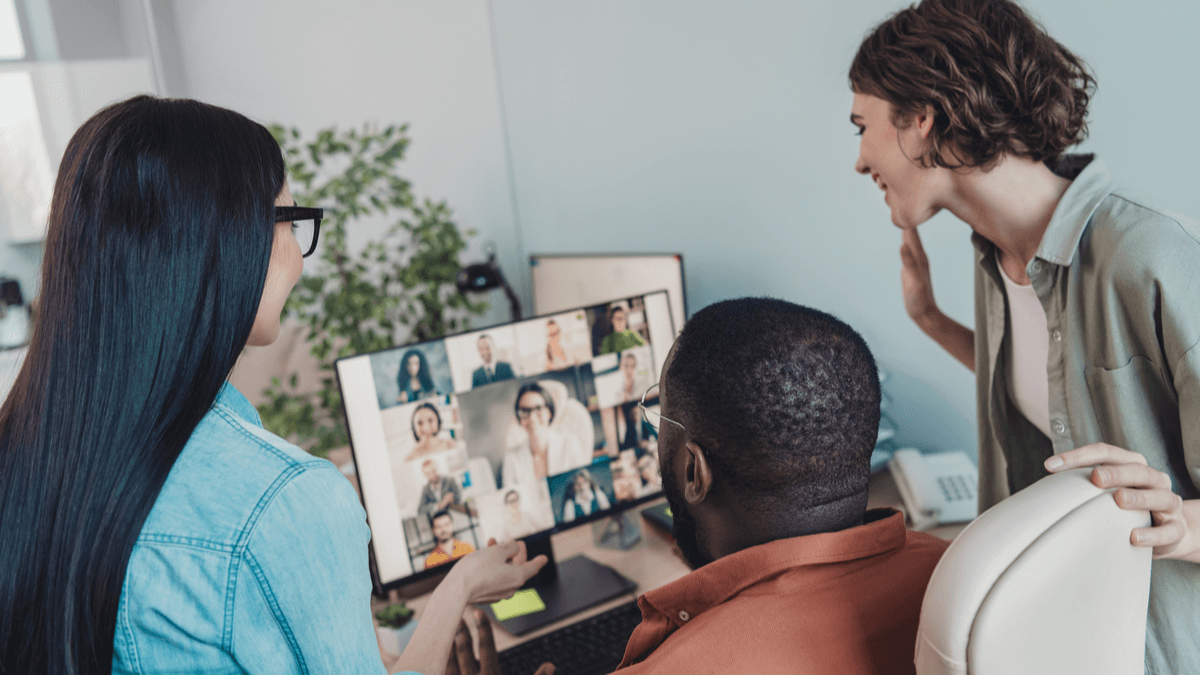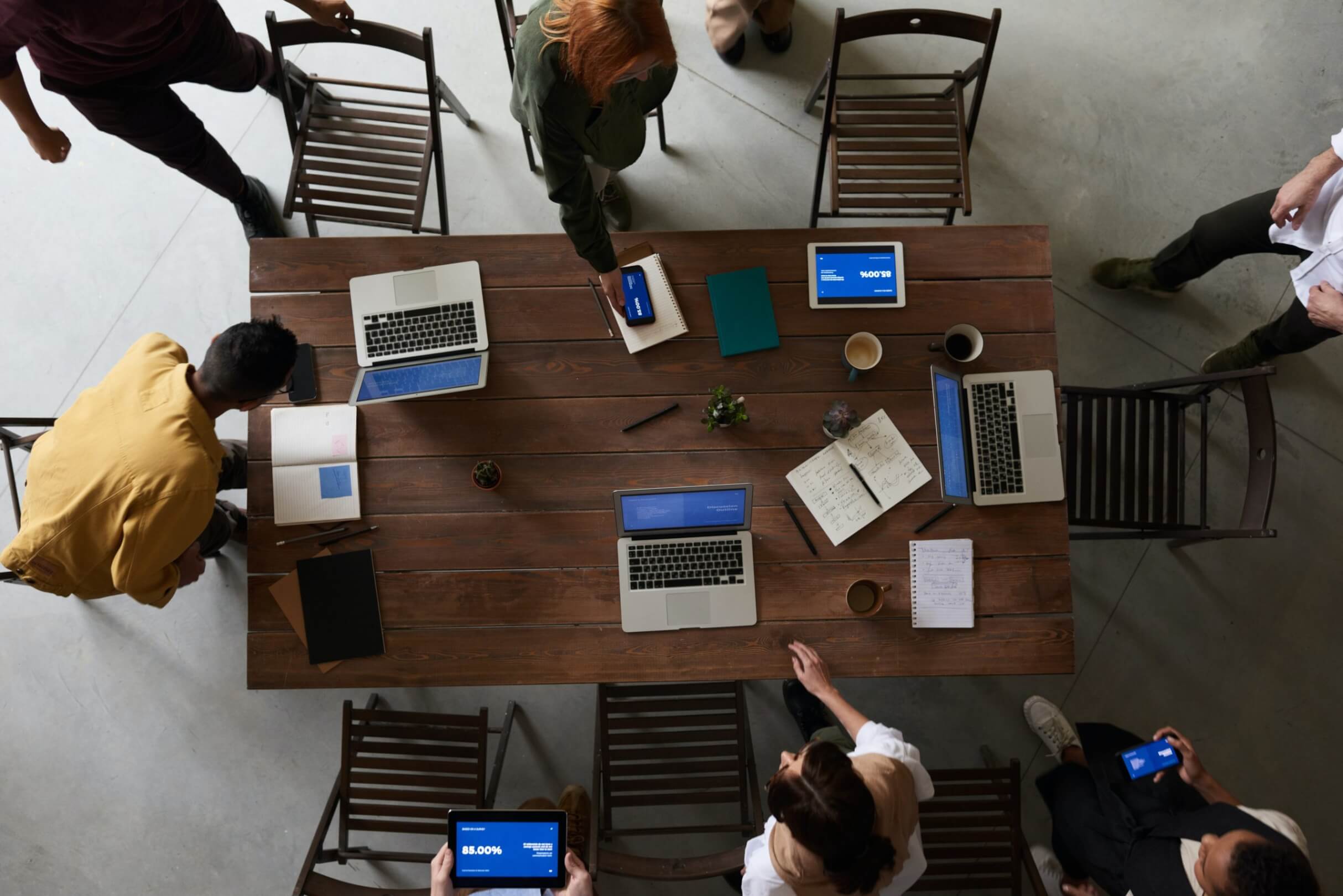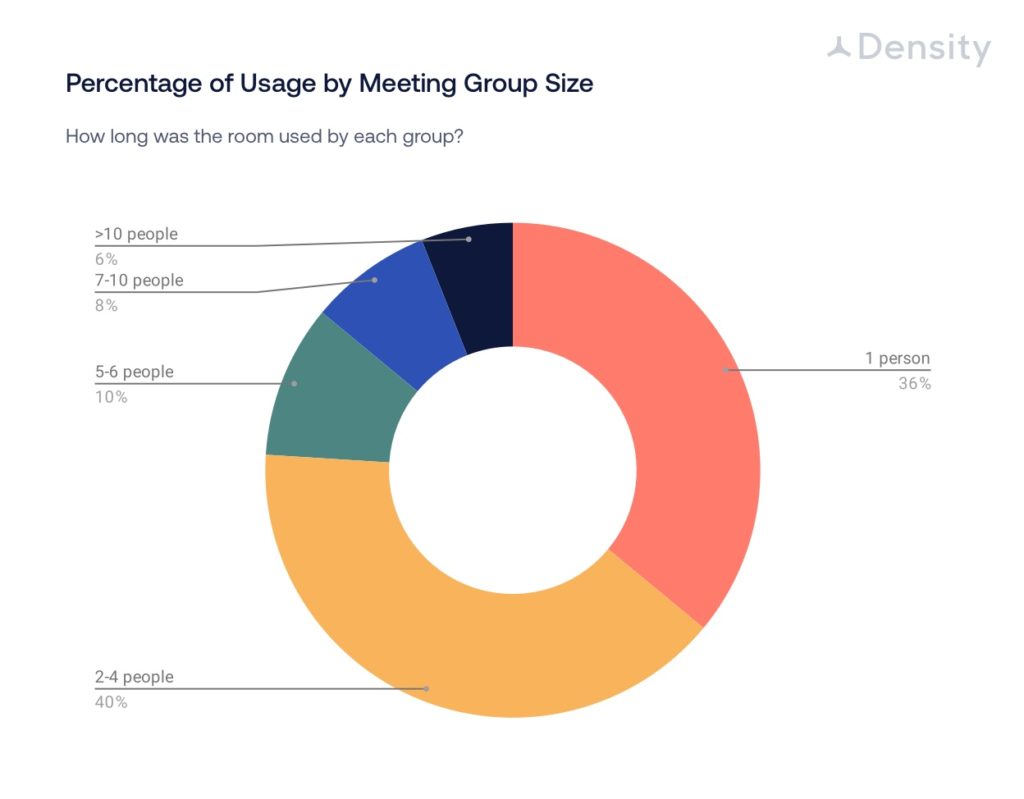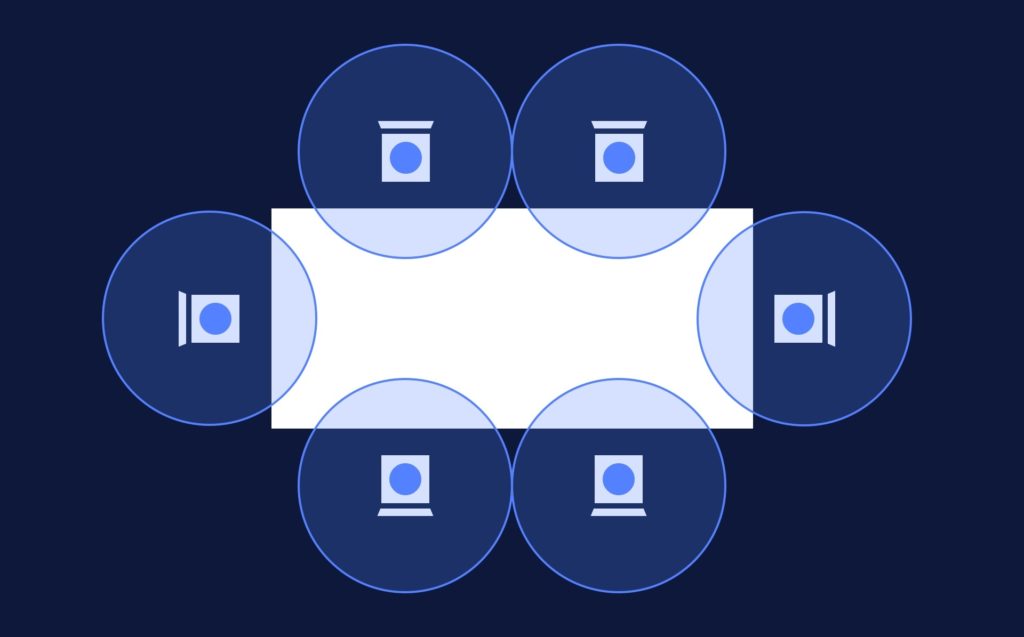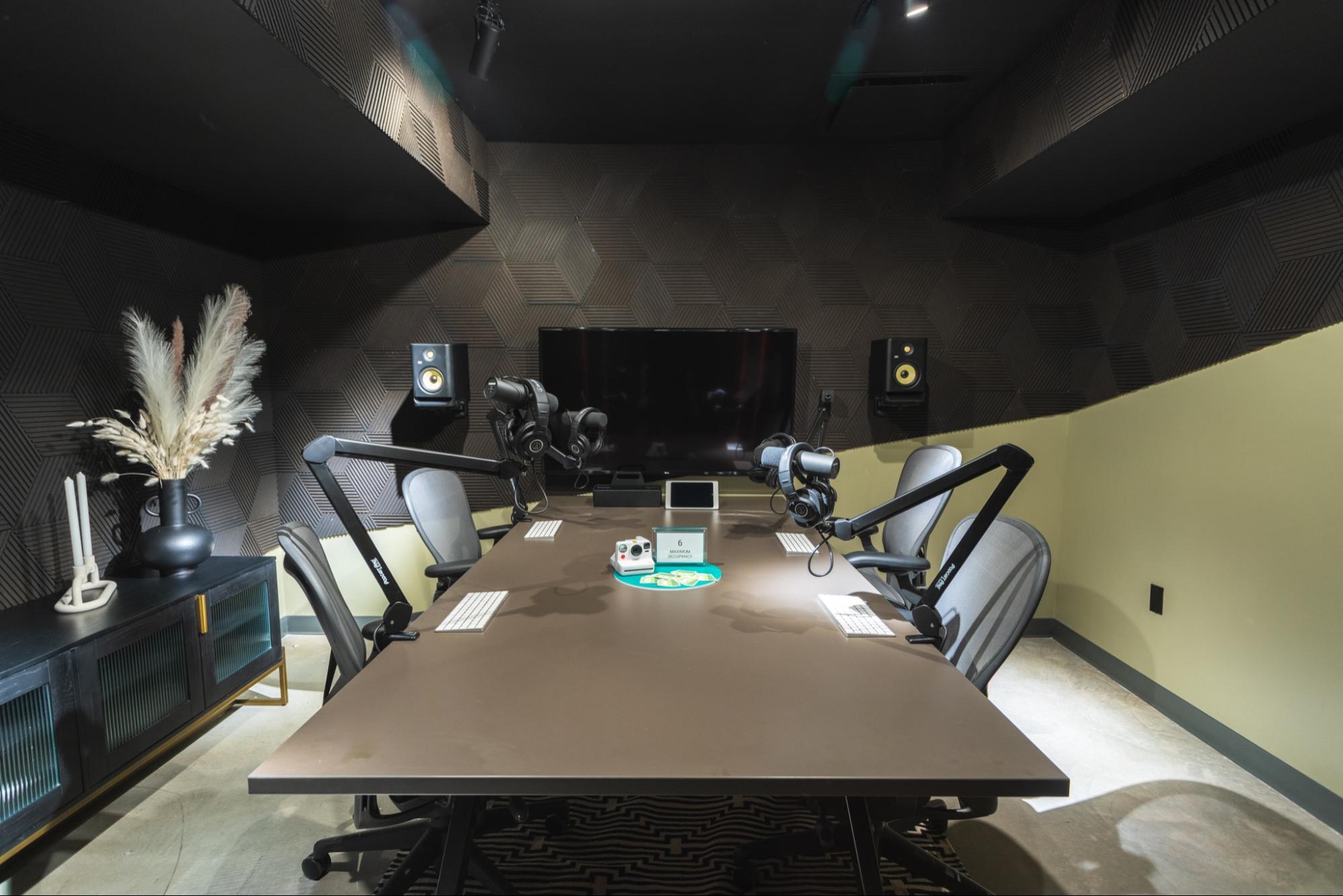Is #lovewhereyouwork still relevant when employees work from their homes first and offices second?
We think so. And most people (employers and employees alike) we talk with agree. The workplace still matters — or at least it can. But make no mistake, change is necessary. Not just in what the workplace looks like, but with who should have a seat at the table when you talk about and create the workplace experience.
Culture and workplace experience
Culture can be tangibly expressed through the workplace environment. People can connect to their environment, identify with it, and take ownership of it. When culture and environment are intertwined, loyalty and commitment grow and strengthen corporate culture.
To address the entire workforce experience, you need to have an ongoing conversation with workers about what is important to them and why it matters. You must banish the harsh lines of hierarchy.
Companies that view hierarchy as the only way to map and structure formal relationships — or, the only way to get things done — are finding the current environment paralyzing. These challenges have created new ways to look at what works and doesn’t within workplace experience.
Creating an inclusive work environment requires addressing factors beyond the physical space. Feedback from your people is a critical part of building inclusive spaces.
“It’s not surprising to me that people and workplace [teams] are now merging,” says Density Workplace Innovation Lead Nellie Hayat, “because we do need data from both categories to help design better than ever before.”
Bringing more to the table
Every major stakeholder in your business has some skin in the workplace-experience game. Building a better strategy will require members from various departments to connect and collaborate to develop and execute scalable plans. But once you do, the benefits are clear.
Moving beyond a survival mindset to a thriving mindset requires recognizing that disruption is continuous rather than episodic. To thrive requires a willingness to use disruption as a catalyst to drive your organization forward.
Those who adopted a thrive mindset were 3x more likely than their peers to bring human strengths to the forefront — leveraging worker adaptability and mobility to navigate disruption. Leadership sets strategies and vision, but managers throughout the organization are the ones getting things done, and they know what’s really going on with their team as they execute.
Co-creation goes beyond merely soliciting workers’ input. It’s about workers having influence and decision rights over what the organization stands for, how the organization defines its workplace culture, and how to better the employee experience. You can create an environment employees want to be in and engage in and set them up to perform their best.
Transforming the workplace starts by gathering different approaches.
Create an “experience board” with team members of varying management levels to give insight into what will work best and/or combine HR people with operations people to create a cohesive effort of different perspectives.
Your IT team should be at the table too. They’ll be better equipped to inform and support everyone when they’re a part of the creation process. IT can provide teams with digital tools to help them work effectively while ensuring security and enablement across adopted services. IT needs a role in educating staff to ensure flexibility in a hybrid workplace so that teams can continue working together, whether in the office, on Zoom, or collaborating in a shared doc.
Effective decision-making is one of the most critical elements of the post-pandemic organization. Being aware of how to accelerate decision-making processes can help minimize unnecessary noise — ensuring people are clear about their roles, responsibilities, and ability to make decisions — and empowering the front lines to make decisions within guardrails.
The reality is, anyone and everyone can have a voice if their workplace lets them. What level of co-creation style reflects the culture you’re cultivating? Ask your team what they want, what they don’t want, and the changes they expect.
Team members bring a lot to the table, and their opinions need to be valued. They are the ones experiencing the challenges, victories, and everything in between. They offer insight into how they feel, how their teammates feel and can opine on what didn’t work in the past. Measuring space utilization will help you see where employees prefer to spend their workdays. But unless you seek feedback from your employees, you won’t gain the critical context needed to make informed decisions.
Once you have people at the table, find out their vision of the new workplace. Determine who needs to — and will — come to the office and how often.
Match these responses to utilization data to close the gap between intent and behavior.
“As we move into the future, I think the employee experience comes front and center,” says Density Strategy & Insights Manager Darren Graver. “I think we transition from this sort of anecdotal feedback to much more of a dynamic feedback loop where technology and data can really help.”
The proof is in the pudding
When a company’s ‘hierarchy of bosses’ becomes less significant than other more flexible structures, a flatter organization emerges naturally — making way for effective changes.
We can see this progression in a variety of companies:
- Twitter moved the workplace team from reporting to the CFO to reporting to their Head of People.
- Slack merged their two teams and created a new name for this team: People and Places leaders.
- Palo Alto Networks is building the future cohesively with a forum called Flex Work, which is being led by the People Leadership Team.
- Zoom, Inc is being represented by Lynn Oldham, their Chief People Officer, at most conferences to talk about the future of work.
- Nerve center at McKinsey was created as a crisis response to give autonomy to their managers to implement creative, pragmatic solutions for their teams’ workplace experience.
What does fluidity look like?
While several types of leadership are recognized in the professional world, two specifically help create a more fluid workspace.
- Helix: The secret of the helix lies in disaggregating the traditional management hierarchy into two separate, parallel lines of accountability — roughly equal in power and authority, but fundamentally different.
- Flatter structures: Removes layers of middle management and encourages greater communication and collaboration between employees.
Adopting an ecosystem mindset is key to either choice. All companies rely on the support of an extensive network of people, vendors, and partners working together to create value, regardless of their structure.
Embracing data-rich technology platforms to gather, organize, interpret, and create an impact on data and analytics will be a defining competitive differentiator of our lifetimes. Companies that embrace it will have an edge.
Learn how to learn. Organizations that equip their teams with the meta-skill of learning how to learn, change, and adapt quickly will be better able to thrive and succeed — and very few are good at it today.
It is crucial to create hybrid and multifunctional spaces and combine the benefits of both the home office and traditional offices for your workplace experience.
Conclusion
The workplace experience is a reflection of culture, structure, and office space. Its creation is your opportunity to reinforce your values.
The pandemic has jolted leaders and organizations into action, accelerating trends already in play and triggering new ones. Companies launching on a journey to organize for the future will need to address the organization as a dynamic system where all elements affect and reinforce each other.
While no one can predict when or how the pandemic will end, the lessons these companies learn as they organize for the future will give them clear advantages as the next “normal” takes shape.
